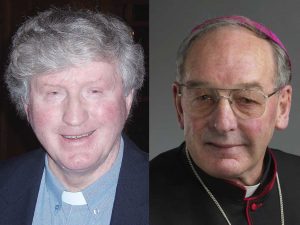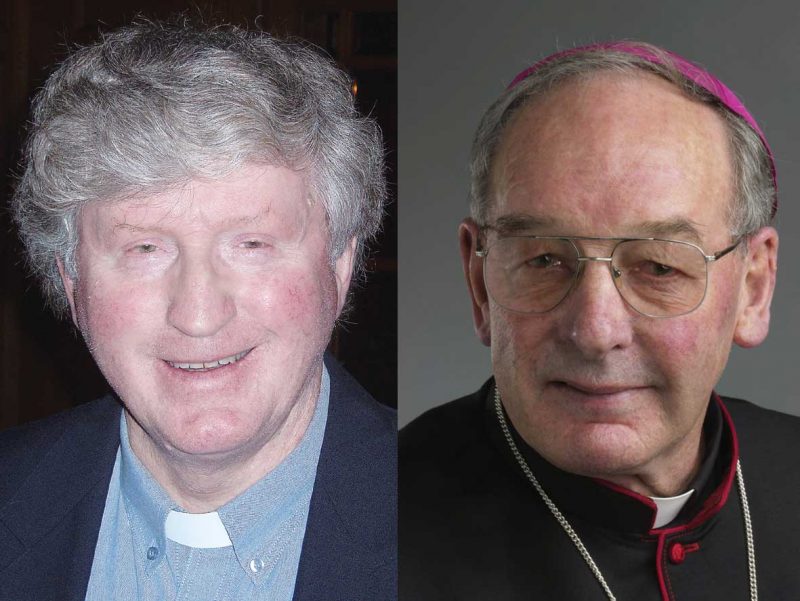by MICHAEL OTTO
Two South Island dioceses will be in for changes at the helm in the not-too-distant future as their bishops approach the age at which they are asked to offer their resignations to the pope.

In September next year, Bishop Colin Campbell of Dunedin and Bishop Barry Jones of Christchurch will turn 75 within a week of each other.
According to the Church’s canon law, when diocesan bishops turn 75, they are asked to offer their resignation
to the supreme pontiff.
Canon 401, #1, states that the pope, “taking all circumstances into account, will make provision accordingly”.
NZ Catholic asked Bishops Jones and Campbell about their hopes for the ministry of their successors in their respective dioceses, their hopes for the timing of their successors’ appointments and their plans regarding resignation.
Bishop Jones said he could not participate in NZ Catholic’s article because he was prevented from so doing by “circumstances and developments”.
Bishop Campbell said a bishop is the chief shepherd or pastor of his diocese. He listed four hopes for any bishop.
“He would enable and encourage the People of God to deepen their discipleship.
“He would continue to encourage the faithful to develop and use their gifts as inspired by the Holy Spirit for the good of the Kingdom of God.
“To foster and encourage the family of God who as missionary disciples would share the Good News with others.
“He would continue to promote the [Dunedin] diocesan synod process based on Evangelii Gaudium.”
In mid-September, Pope Francis asked his C9 Council of Cardinals to review the way the Church identifies and appoints bishops. He wants them to particularly look at the qualities needed in a bishop today.
There are more than 150 new bishops named each year in the Latin-rite Church.
The process for appointing bishops involves widespread consultation involving people who may know candidates.
Information is gathered by the apostolic nuncio, who forwards recommendations to either the Congregation for Bishops or the Congregation for the Evangelisation of Peoples.
The nuncio typically submits a list of three candidates in what is called a terna.
For New Zealand, the nuncio sends recommendations to the Congregation for the Evangelisation of Peoples, which then sends their recommendations to the Congregation of Bishops, which sends final recommendations for consideration by the pope.
In an August interview in the Irish Times, the apostolic nuncio to Ireland, Archbishop Charles Brown, said the amount of documentation that goes to Rome about every episcopal candidate “would be in the neighbourhood of 35 to 70 pages of consultation, of analysis, opinions . . .”.
Bishops provide nuncios with lists of suitable candidates, and those lists are updated every one or two years, Archbishop Brown said.
It was put to Archbishop Brown that none of the 10 bishops who have been appointed in Ireland under his watch — since 2012 — was from the diocese he now leads.
Archbishop Brown responded that appointments from outside dioceses is “not an absolute rule written in stone”.
But he added that it is “fair to say that in the Church universal, generally, for the past probably 10 or 15 years, the tendency has been to appoint new bishops from outside dioceses”.
That has been the case with the last two diocesan bishop appointments in New Zealand, with the Bishops of Palmerston North and Hamilton, Bishops Charles Drennan and Stephen Lowe, both coming from Christchurch diocese.
Times for appointing bishops can vary.
Bishop Drennan was ordained as a coadjutor bishop for Palmerston North before Bishop Peter Cullinane turned 75, after the latter requested such an appointment, NZ Catholic understands.
But it took more than two years after Bishop Denis Browne submitted his resignation upon turning 75 for Bishop Lowe to be appointed.
Retirement nears for South Island bishops

Posted in News
Reader Interactions